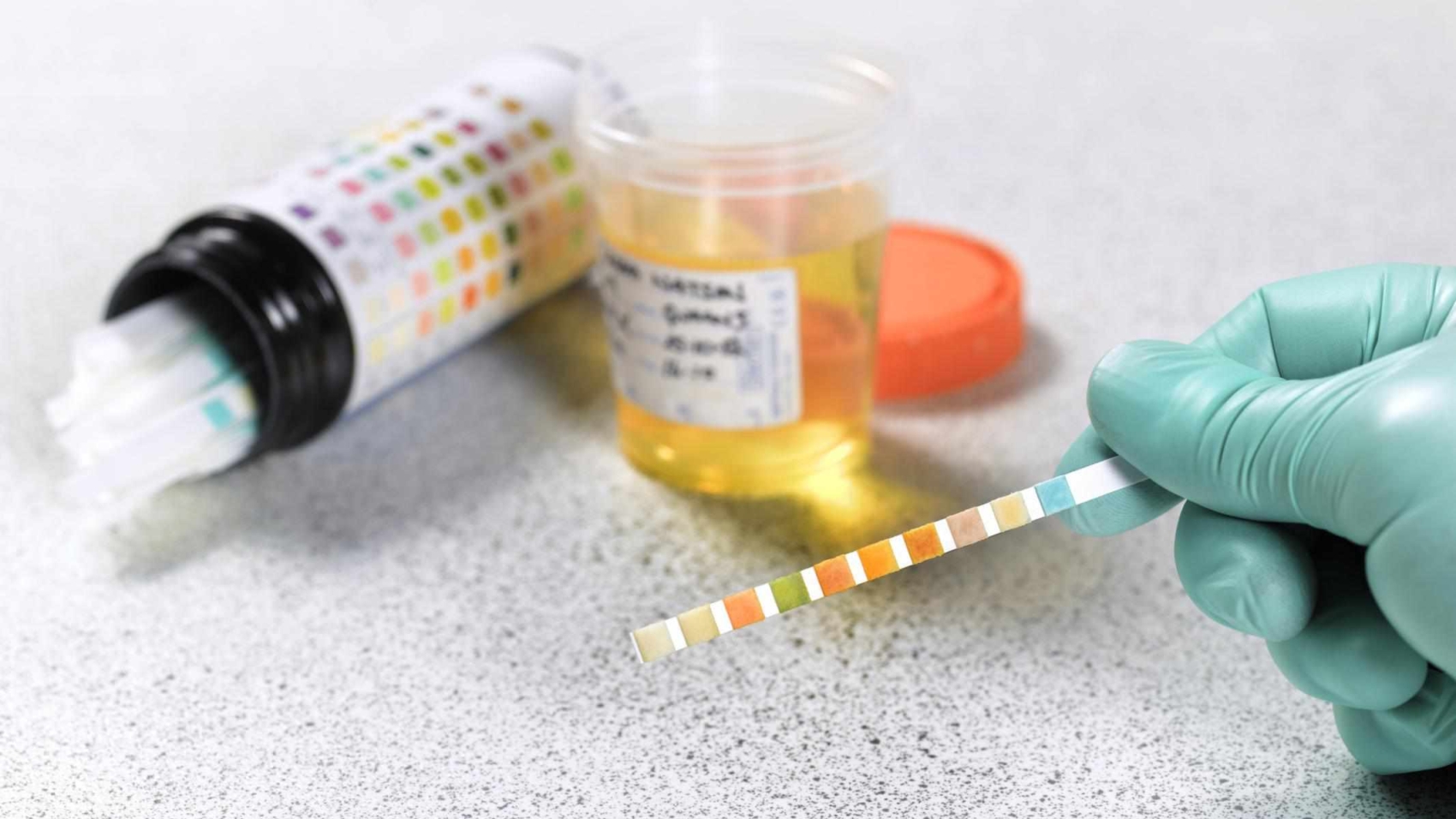:max_bytes(150000):strip_icc():format(jpeg)/137357467-569fe6793df78cafda9efe59.jpg)
The ethyl glucuronide (EtG) test is widely used to detect the presence in the urine of ethyl glucuronide. EtG is a breakdown product of ethanol, the intoxicating agent in alcohol. The test can also screen for EtG in the blood, hair, and nails, but the urine test is the most widely used. The main purpose of the EtG test is to document alcohol abstinence.
Learn why the EtG test is used, how accurate it is, and the truth behind EtG alcohol test facts and myths.
EtG Test Uses
The EtG test is used to detect alcohol abstinence in situations that do not allow drinking. These may include:
- Alcohol treatment programs
- Court cases (for example, child custody)
- DUI or DWI programs
- Liver transplant patients
- Probation programs
- Professional monitoring programs (for example, airline pilots, healthcare professionals, attorneys)
- Schools or the military
One of the primary benefits of an EtG test, compared to blood or breath alcohol tests, is that EtG can be detected longer in the urine than in blood or breath.
It’s important to note that the EtG test is not recommended for workplace testing programs as it does not measure current impairment from alcohol.
Detection Time Frame
The EtG test strips are quite sensitive and can detect even low levels of EtG in the urine. (Remember, the test measures EtG specifically—not alcohol.) The test can confirm that there has been alcohol in the body up to five days after consumption.
In studies of participants without alcohol use disorders, EtG has been detected in urine samples for up to 80 hours (3.3 days) after heavy alcohol exposure.
EtG Test Accuracy
There are some limitations to this test. The EtG test strips can produce a positive result from exposure to the alcohol that’s present in many daily use products. Environmental or home products that contain alcohol include:
- Aftershave
- Breath sprays
- Cleaning products
- Cosmetics
- Foods prepared with or flavored with alcohol
- Hair dye
- Hand sanitizers
- Hygiene products like antiperspirant
- Mouthwashes
There are hundreds of household products that contain ethanol, according to the Consumer Product Information Database, and exposure to them could possibly lead to a false positive on the EtG test.
But the EtG test strips accurately detect when a person has recently consumed alcohol 70% or more of the time. One study showed that for moderate to heavy drinking, this number jumps to 85%.
The Substance Abuse and Mental Health Services Administration (SAMHSA) lists EtG as a test that can help rule in or rule out whether someone has been drinking with high accuracy.
EtG Test Results
The following cutoff values have been proposed for test results.
High Positive
A “high” positive EtG test (for example, >1,000ng/mL) may indicate:
- Heavy drinking on the same day or the previous day
- Light drinking on the same day as the test
Low Positive
A “low” positive EtG test (for example, 500 to 1,000ng/mL) may indicate:
- Heavy drinking within the last one to three days
- Light drinking within the last 24 hours
- Recent intense exposure to environmental products containing alcohol (within the last 24 hours)
Very Low Positive
“Very low” positive EtG test (for example, 100 to 500 ng/mL) may indicate:
- Heavy drinking within the last one to three days
- Light drinking within the last 12 to 36 hours
- Recent exposure to environmental products containing alcohol
A 2015 study suggested that a 100 ng/mL cutoff was likely to detect heavy drinking in the previous five days and any drinking in the last two days. A cutoff greater than or equal to 500 ng/mL was likely to only detect heavy drinking during the previous day.
How EtG Is Eliminated From the Body
EtG is eliminated from the body over time after you drink water and other fluids that flush it out when you urinate. Although drinking water does help flush EtG out of your system, it’s a myth that you can use this method to reliably manipulate drug test results.
While you may try drinking a lot of water to flush EtG out of your system in the days leading up to a drug test, you should know that this is not always effective. Laboratories may detect any tampering with urine samples.
Research has suggested that by measuring urinary creatinine (a chemical compound and waste product of urine), health professionals can identify when a urine sample has been diluted or when someone tried to disguise their EtG levels by drinking a lot of water.
It’s also a myth that one drink won’t show up on the EtG test. Whether the test detects one drink depends on many factors, like how recently you drank, your metabolism, and the alcohol percentage of your drink. But if you drank any alcohol in the past five days, there is a high chance the EtG test will detect it.
Remember, EtG tests don’t measure the number of drinks you had. Its job is to indicate whether you’ve had any alcohol at all—not the specific amount.
The only way to ensure you pass an EtG test is to abstain from alcohol consumption.
Source link


Add a Comment